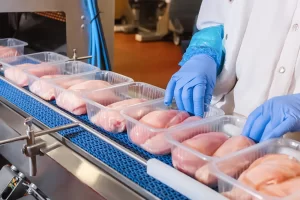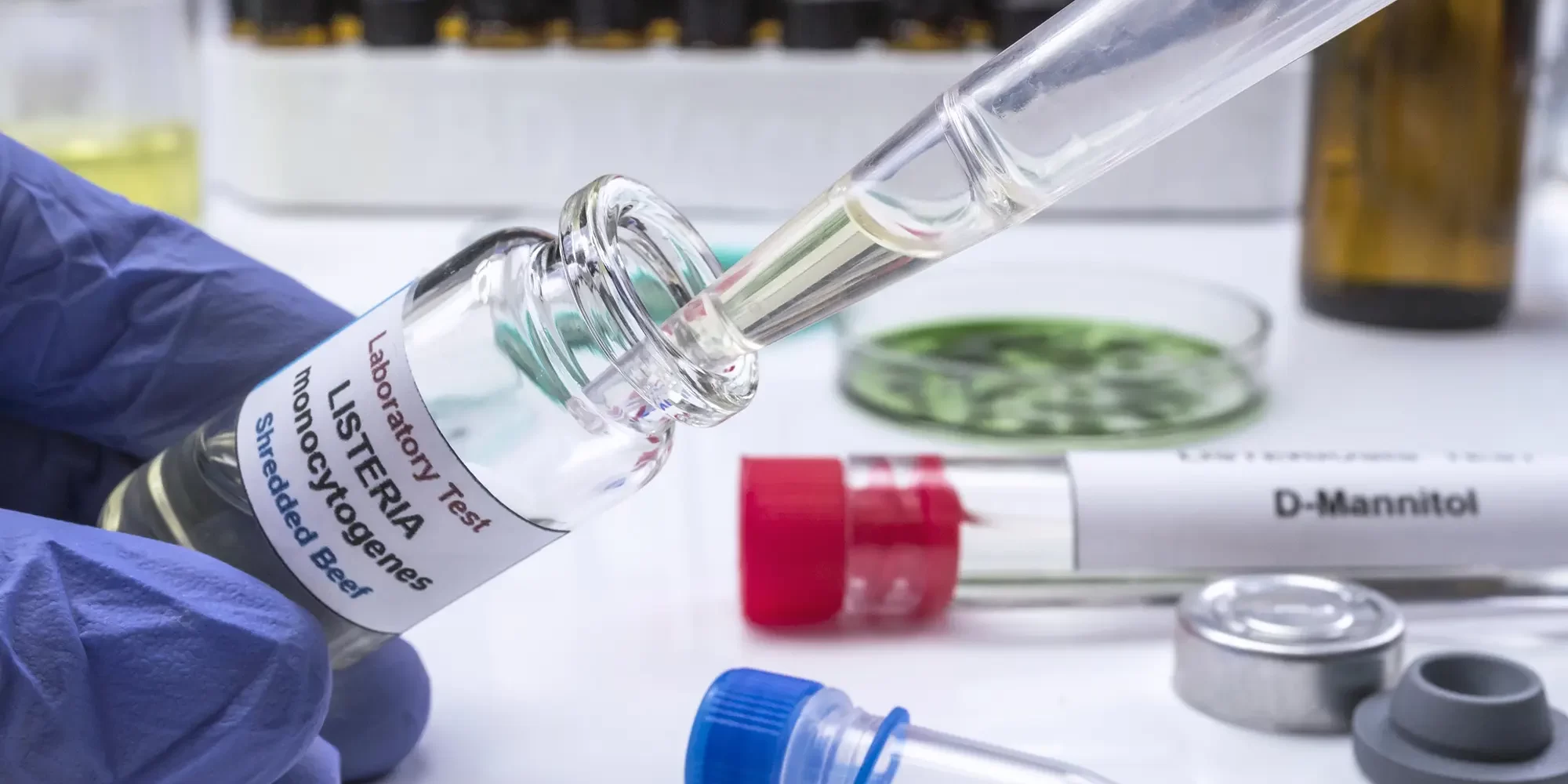Listeria monocytogenes, a bacterium found in soil, water, and contaminated food, poses significant risks to public health, particularly in the food industry.
This pathogen is the cause of listeriosis, a serious infection that can be especially dangerous for pregnant women, newborns, the elderly, and those with weakened immune systems.
Given its ability to grow at refrigerator temperatures, Listeria presents unique challenges in food processing and storage environments.
The Challenges of Listeria in the Food Industry
 One of the primary challenges in controlling Listeria is its resilience. Listeria can survive and proliferate in conditions where other pathogens cannot, notably thriving in cooler temperatures that usually help preserve food. This makes it incredibly difficult to eliminate from environments like cold storage rooms and refrigerated display cases where ready-to-eat foods are often stored.
One of the primary challenges in controlling Listeria is its resilience. Listeria can survive and proliferate in conditions where other pathogens cannot, notably thriving in cooler temperatures that usually help preserve food. This makes it incredibly difficult to eliminate from environments like cold storage rooms and refrigerated display cases where ready-to-eat foods are often stored.
Additionally, Listeria’s ability to form biofilms on various surfaces adds another layer of complexity to its control. Biofilms are protective structures that shield bacterial communities from external threats, including sanitisation efforts, making complete eradication challenging. Consequently, any contamination in the food production process can lead to long-term persistence of the bacterium, recurring contamination, and increased risk of foodborne outbreaks.
Preventive Measures and Industry Standards
The food industry employs several strategies to manage the risk of Listeria. These include rigorous hygiene practices, regular sanitisation of equipment, and adherence to food safety protocols designed to prevent contamination. Regulatory bodies also enforce strict standards and routine testing to ensure that food products do not harbour harmful levels of pathogens.
Despite these measures, completely eliminating the risk of Listeria requires persistent efforts and often innovative solutions, especially as strains become resistant to traditional methods of control.
The Role of Chlorine Dioxide in Controlling Listeria
Chlorine Dioxide (ClO2) has emerged as a highly effective disinfectant in the battle against Listeria. Unlike some traditional sanitising agents, ClO2 is exceptionally potent against bacteria, viruses, and fungi, and it is particularly effective in penetrating biofilms. This makes it an invaluable tool in environments where Listeria is a concern.
Chlorine Dioxide works by disrupting the protein synthesis and permeability barrier of microbial cell walls, leading to rapid bacterial inactivation. It is effective across a wide pH range, which is beneficial for different processing environments in the food industry. Moreover, ClO2 does not leave toxic residues, ensuring that food products remain safe and uncontaminated after treatment.
Scotmas’s Expertise in Chlorine Dioxide Solutions
Scotmas is at the forefront of developing Chlorine Dioxide solutions tailored to the needs of the food industry. Our products are designed not only to combat pathogens like Listeria effectively but also to integrate seamlessly into existing hygiene and sanitisation protocols. By incorporating Scotmas’s ClO2 systems, food producers can enhance their defensive strategies against microbial threats, ensuring product safety and compliance with health regulations.
Conclusion: A Stronger Approach to Food Safety
Understanding the challenges posed by Listeria and implementing effective control measures like Chlorine Dioxide are crucial for maintaining the highest standards of food safety. With Scotmas’s innovative solutions, the food industry can achieve better protection against this resilient pathogen, safeguarding consumer health and enhancing operational efficiencies. Contact us today for more information on how our Chlorine Dioxide solutions can assist your efforts in controlling.






